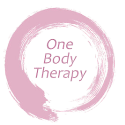As you know I am trained as a Sports & Remedial Soft Tissue Therapist and doing the work I've learned about different compensation patterns in my own body and within clients bodies too.
So, what is compensatory muscle patterning? When primary muscles do not work properly in movement, the brain tells other muscles to perform that movement instead. Research in functional movement has found that no single muscle performs a movement. Rather, movement occurs through chains of muscle contractions and releases along lines of kinetic movement.
Patterns of compensation can develop for many reasons as there are many causes for a muscle to stop doing what is suppose to do: weakness, nerve inhibition, lifestyle and poor postural habit, repetitive motion, injury, surgery, environmental, overuse, joint immobilisation, problems with joint stabilisation, dysfunctional movement (yes, compensations can actually create other compensations), etc.
When any of these occur, the brain sets up another way to make movement happen. In other words, the brain compensates.
I’ve been able not just to identify compensation patterns at muscular level but at emotional level too, as much in myself as in the people I treat.
Me: Anything happening? (during an Amanae session)
Patient: I was wondering about shopping.
Me: Great. Take me with you into your shopping.
How does shopping feel for you?
Patient: (Crying) Seems it is the only joy I can have now. There’s so much sadness. When I’m shopping I feel I can be someone else, that I can have a different life.
There are many reasons why we may use a coping mechanism for stress, difficult emotions, physical ailments, and other issues. They can provide us a temporary respite from reality and everyday life. They can enhance our sense of pleasure and decrease inhibitions and anxiety. Some of us have had the experience of being able to talk and connect easier with people in a party after a couple of drinks and not feeling that void, hole in the stomach.
Coping mechanisms are compulsions, or habits formed over time, that serve to help a person manage with particular situations or stress levels. Not all coping mechanisms are maladaptive or destructive; however, addiction is both.
Coping mechanism can be seen as crutches: a method or a tool of dealing with unhappiness, stress, or other uncomfortable issues. It is whatever we do to handle negative emotions or problems. We can use drugs, alcohol, shopping, gambling, sex, internet use, eating, not eating, work, exercise, relations, pleasing people, and so many other behaviours.
It is understandable that cravings for the behaviour can be intense, and withdrawal can be difficult, as stress levels and unhappiness will increase if these behaviours are not repeated.
In Amanae we work along the body, specially with the nervous system, with these uncomfortable sensations, to expand and explore them in a non judgmental safety environment. This allows the body/mind to unlearn old ways and be retrained as new neurological pathways develop to understand in the flesh, these sensations can be felt without us perishing.
18 - 03 - 2024
